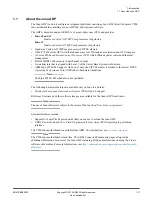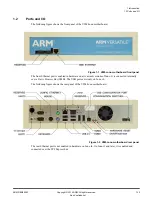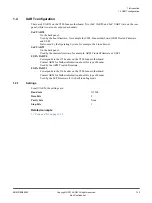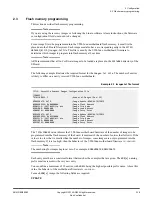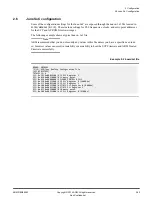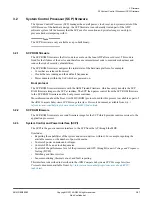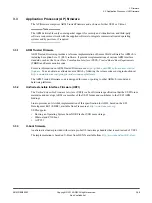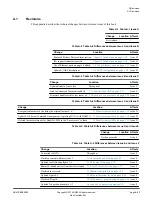
2.7
Linux filesystems
By default, the V2M-Juno motherboard does not contain any flash Linux filesystems, for example
Android, or Open Embedded, anywhere in its on-board storage. To fully boot either of these platforms it
is necessary to attach a filesystem, for example, Android or OpenEmbedded, using an external storage
device. If no filesystem is attached at boot time, and the Linux kernel that is programmed into flash
expects one, the kernel will boot as far as possible before stopping while it waits for a filesystem to be
attached.
Note
If you are using a pre-built Busybox image, the system will boot Linux fully without the need for an
external USB storage device containing a filesystem.
ARM recommends that a USB disk is connected using one of the four USB 2.0 ports on the rear panel.
The type of USB disk can be a flash drive or a hard drive as both are compatible.
http://community.arm.com/groups/arm-development-platforms
for details on preparing an Android or
OpenEmbedded filesystem image and how to copy it onto a USB disk ready for use.
Related concepts
2 Configuration
2.7 Linux filesystems
ARM DEN0928F
Copyright © 2015 ARM. All rights reserved.
2-24
Non-Confidential


